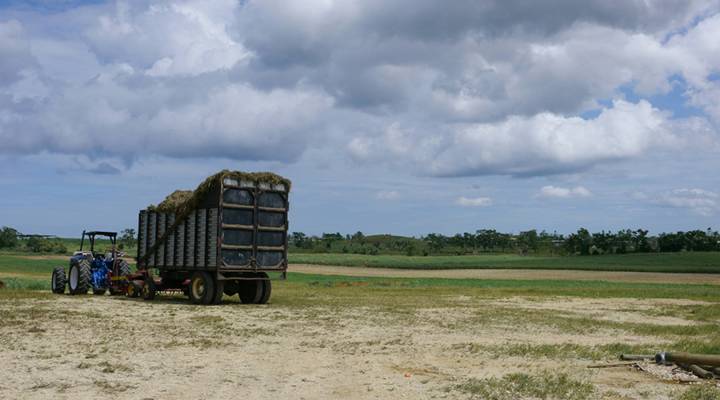
Will Puerto Rico’s dairy industry survive after Hurricane Maria?
Will Puerto Rico’s dairy industry survive after Hurricane Maria?

Seventy-two days after Hurricane Maria, much of the island of Puerto Rico still has issues with power. Lack of electricity is a huge problem for residents and business owners. You move away from San Juan, and the issue is clear.
Hatillo, a northern coastal town, is a major producer of the island’s milk. The hurricane’s destruction on the streets of Hatillo is obvious. Power lines are hanging down from the poles that once held them up, debris is piled on the sides of the road, businesses are boarded up and cows are walking the streets, disrupting traffic.
Vaqueria Ceiba del Mar made it through this year’s hurricanes. The dairy farm sits on 220 acres of lush, green land. As you pull off the road and into the farm, you see a whole lot of cows, bales of hay, farm equipment and just two workers. Like most places on the island, the farm is powered by generators.
Luis Martinez manages the Vaqueria Ceiba del Mar farm.
“It’s very expensive, we’ve spent over $20,000 in diesel,” said Luis Martinez, who manages the farm. “It’s been frustrating. That generator uses almost 100 gallons of diesel a day.”
Martinez has worked at the dairy 15 years. The owner runs three farms in total, all close to each other. But after Hurricane Maria, he was forced to close two of them down and move all of his surviving cows to Vaqueria Ceiba del Mar. Now the farm is home to 800 cows.
“We had to walk them through the streets. The farms are all nearby. We spent, like, eight hours bringing them all here,” Martinez said.
Around 200 of the cows died during or after Hurricane Maria. Martinez said that’s a loss of about $600,000. And although some of the equipment and structures on the the farm are insured, the cows are not. The cost to replace just one animal? $2,600.
Another issue on his mind is milk production. His cows are not producing as much milk as they were before Hurricane Maria. Dairy cows can drop in milk production if something frightens them.
“And some that were brought over weren’t used to this farm. So those wouldn’t produce as usual,” Martinez said. “Until this day, they still don’t. We’re producing about 4,000 liters less than we were before, all 3 farms combined.”
Not only is milk production down, but the first week after Maria, Martinez had to throw out about 18,000 gallons of milk. Between the cows, the milk, the damage, Vaqueria Ceiba del Mar is looking at a loss close to $1 million.
However, farmers can get some financial help. The United States Department of Agriculture approved up to $12 million specifically to help dairy farmers feed their animals for 30 days.
“It was the biggest help they could’ve given us because it was one of the biggest issues,” Martinez said.
A farm hand cleans up after milking cows in Hatillo, Puerto Rico.
Still, he has concerns about Puerto Rico’s dairy industry for the long term, and it all goes back to the need for reliable power on the island.
“There are gonna be few dairy farms left on this island,” Martinez predicted. “And if they don’t fix the power up to standards, there will be a problem where the plants pick up the milk but don’t have anyone to sell it to. Because if supermarkets don’t have power, they won’t buy your milk.”
| The business of disaster: How does the U.S. spend relief money? |
| Some Puerto Ricans refuse to leave their island, despite lack of power |
| Working to get the lights back on in Puerto Rico |
There’s a lot happening in the world. Through it all, Marketplace is here for you.
You rely on Marketplace to break down the world’s events and tell you how it affects you in a fact-based, approachable way. We rely on your financial support to keep making that possible.
Your donation today powers the independent journalism that you rely on. For just $5/month, you can help sustain Marketplace so we can keep reporting on the things that matter to you.


















